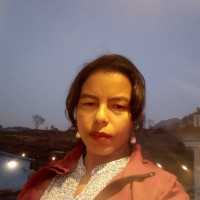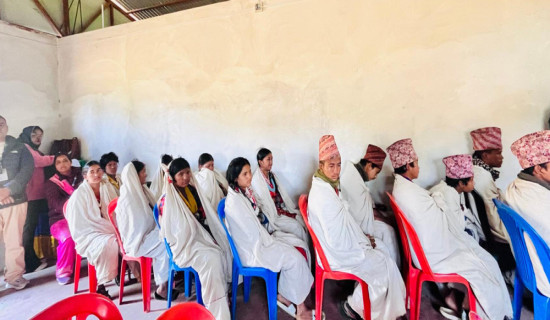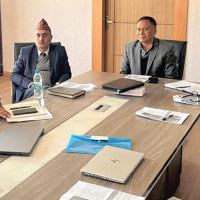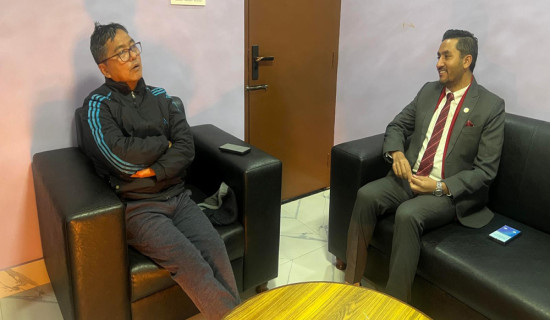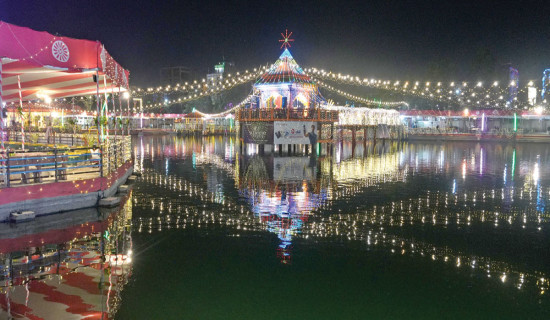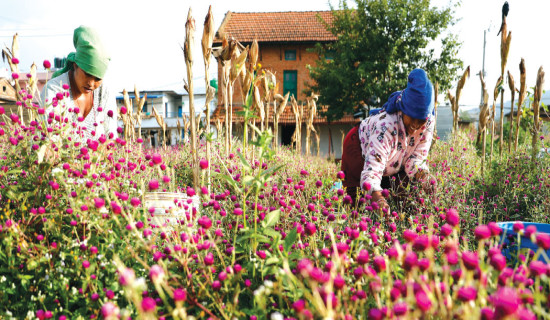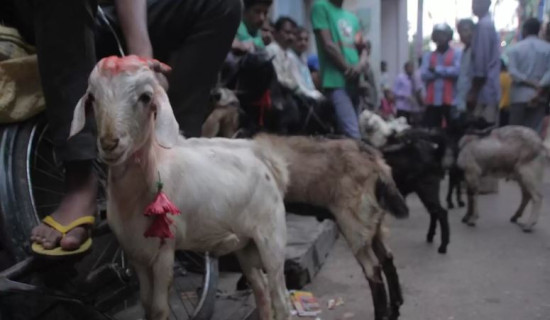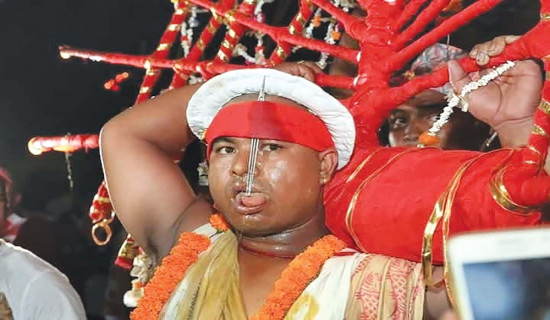- Wednesday, 7 January 2026
Khokana locals celebrate Sikali Jatra instead of Dashain
Kathmandu, Sept. 25: While the entire nation is preparing to celebrate the grand festival of Dashain, the people of Khokana in Ward No. 21 of Lalitpur Metropolitan City are focused on celebrating the festival of Rudrayani, popularly known today as Sikali Jatra.
During Dashain, Nepalis traditionally mark the festival by applying Tika and sowing seeds for Jamara at every household and sacred site. However, the people of Khokana do not grow Jamara.
Khokana, located south of the Kathmandu Valley, is famous for mustard oil and beaten rice across the country. However, many people do not know another feature of Khokana—people here do not celebrate Dashain, the biggest festival of Nepalis.
When the people in other parts of the country and even in the neighbouring villages are sowing seeds to grow Jamara for Dashain, the people of the ethnic Newar Community of Khokana are busy celebrating the Sikali festival from Monday on the day of Ghasthapana. Coincidentally, both festivals begin on the same day.
Sikali festival is very important for the Khokana people, they celebrate this festival by performing different rituals, mask dances and eating different food items till the day of Mahanawami of Dashain on October 1, said Rabindra Maharjan, Ward Chairperson of Lalitpur Metropolitan City-21.
From the first day, a secret puja is performed at the Sikali Temple located on a tiny hill ground just outside the town for four days. Eight unmarried boys perform the special puja.
The puja items for the four days are collected from each household of trustees of two Guthies-Ta-Guthi and Shree Khanda Sala-Guthi, he said.
The main day of the festival falls on September 26. On this day, the idol of Goddess Rudrayani is brought to the Sikali Temple by keeping on a wooden chariot and playing musical instruments.
All the main trustees of the Guthis, priests and locals visit the chariot to perform several rituals. Along with rituals and puja, an Ashwamedha Yagya is performed in the evening and it continues for the next day.
The 46 Devgans also join the people; they are the main attraction of the day. Of them, 14 Devgans perform the mask dance on the sixth day on September 27. The dancers dress up as Rudrayani, Indrayanii, Mahalaxmi, Chamunda, Barahi, Kumari, Bhariav, Ganesh, Brahma, Mahadev, Bishnu, Hanuman, Kumar and Shakti Kumar.
They return to Khokana from the Sikali Temple after performing all rituals and mask dance around the Khokana town and the chariot of Rudrayani is taken back.
The festival concludes by restoring the Rudrayani idol at the Rudryani Temple on the day of Mahaasthami.
Sikali festival looks like an alternative to the Dashain festival for the Khokana residents.
However, there was a time when the locals of this town used to enjoy Dashain, which they call Mohani in Nepal Bhasa. Then Sikali Jatra used to fall on the day of Gai Jatra.
According to a popular myth, once demons started troubling the residents of Kudesh (area of the present-day Sikali Temple), and they performed various rituals and called on the gods for help but the demons did not go away.
In the end, the people decided to shift the town itself to the present-day Khokana area. While moving, they also brought the goddess with them and established her in the present-day Rudrayani Temple.
In the new location, a new date had to be fixed to celebrate the Sikali Jatra, and the new date for Sikali Jatra happened to be during Dashain. Now, the people had a choice to celebrate Dashain or the Jatra.
They could not celebrate both because that would be too expensive and tiring. It also would divide time and resources leaving people unable to celebrate either of the two festivals properly. So, they chose the Jatra because Rudrayani Devi was the city’s guardian deity and her festival was more important than Dashain for them.
The festival of Sikali Jatra has been in practice since 336 Nepal Sambat during the reign of King Amar Malla.


